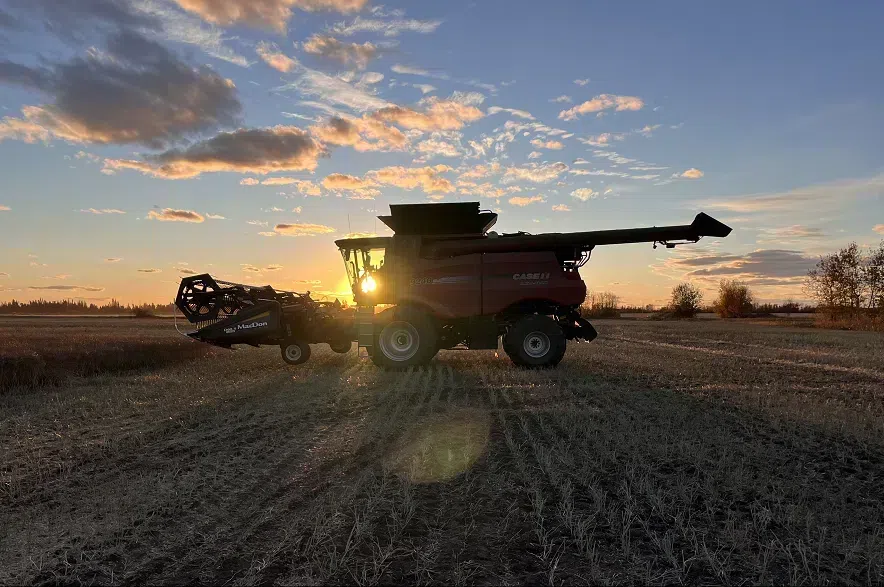Producers across Saskatchewan are preparing for winter after the end of the 2025 harvest season.
According to the weekly crop report from the Saskatchewan Ministry of Agriculture, which covered the week ending on Monday, only a few acres of later-seeded crops like oilseeds and chickpeas remain in the field, as some producers had to push back harvest operations due to rainfall, frost and high humidity.
Read more:
- Farmers call govt to take action against Chinese canola tariffs
- Farm groups ask federal government to create export sales reporting program
- Scott Moe shares concerns with federal ministers as India imposes tariff on peas
But for most Saskatchewan farmers, harvest is over and the preparations for winter have begun. That means applying fertilizer and spraying for weeds, as well as harrowing fields, picking rocks and ensuring equipment is in good order ahead of the spring.
Meanwhile, ranchers are marketing their cattle, moving animals out of pasture and hauling bales for winter feed.
But while harvest has wrapped up for most Saskatchewan farmers, they might not look back at the 2025 season with fond memories. In addition to concerns around canola tariffs, the ministry explained that growing conditions varied significantly across the province this year, with some areas continuing to struggle with drought.
“Some crops were seeded into dry soil and did not receive sufficient rainfall until June or July, causing uneven emergence and crop staging early in the season,” the ministry noted in its report.
“Pests like bertha armyworm, cabbage seedpod weevil and Richardson’s ground squirrel also posed challenges in some regions.”
Harvest was also slightly delayed this year, which the ministry attributed to rainfall and uneven crop staging in many parts of Saskatchewan.
“Abundant moisture in late July and early August caused regrowth of crops and weeds, which resulted in uneven crop maturity and complicated harvest efforts,” the ministry said.
But despite the challenges, the ministry said crop yields were above average in most parts of the province, with all crop types yielding above the 10-year average. While many crops were graded in the highest two categories, the ministry noted that some downgrading due to drought, pests and late-season rain.
“Average silage yields in the province this year are 5.82 tons per acre, which is lower than the 6.37 tons per acre reported last year,” the ministry noted.
“Hay prices vary throughout the province, but on average, alfalfa is $144.72 per ton, brome is $149.44 per ton, greenfeed is $107.73 per ton, straw is $50.83 per ton and standing hay is $63.47 per ton.”
Heading into the winter months, topsoil moisture levels vary quite a bit across Saskatchewan. The ministry said generally, the eastern half of the province has sufficient moisture, while conditions are drier in western regions.
For cropland, topsoil moisture was rated as four per cent surplus, 55 per cent adequate, 33 per cent short and eight per cent very short. In hayland, soil moisture was rated as three per cent surplus, 51 per cent adequate, 36 per cent short and 10 per cent very short. In pastures, moisture was rated as two per cent surplus, 38 per cent adequate, 45 per cent short and 15 per cent very short.
“Significant rainfall and snow are needed in the coming months to replenish soil moisture levels for next spring, especially in western regions,” the ministry said.
“In general, pastures in the best condition heading into the winter are in the eastern half of the province and pastures in lower conditions are located in the western half. Provincially, three per cent of pastures are in excellent condition, 29 per cent are good, 37 per cent are fair, 21 per cent are poor and 10 per cent are in very poor condition.”
A full version of the crop report, including grading data on crop types, can be found on the ministry’s website.











